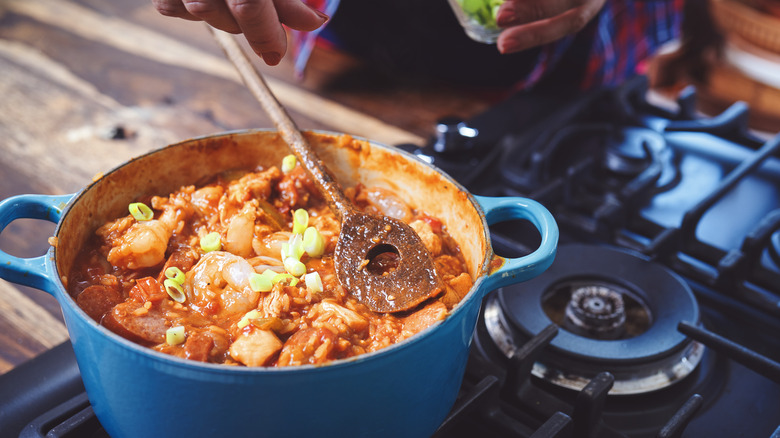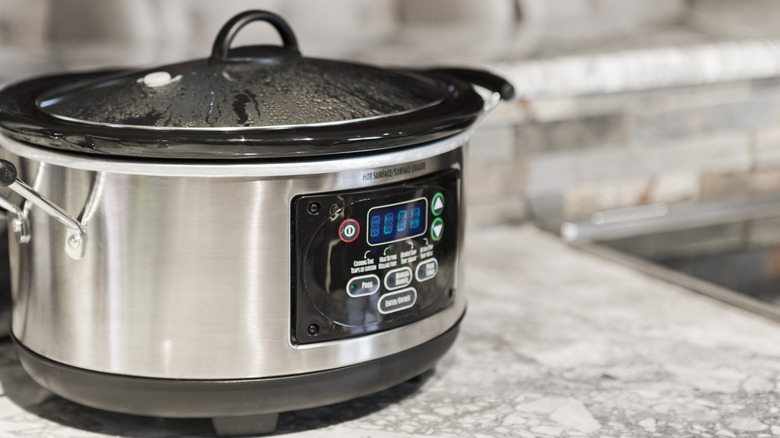When Making Gumbo, Patience Is Key
Gumbo may have a name that sounds like a cartoon character and reminds us of blowing bubbles, but it's actually a tasty stew that's not too different from jambalaya, only with the rice served separately. As gumbo is often considered to be one of the classic New Orleans foods, who better than to advise on its preparation than a Crescent City restaurateur such as Edgar "Dook" Chase IV? Chase, the executive chef at Dooky Chase, is the third member of his family to run the restaurant that (sort of) bears his name. When Mashed asked for his main gumbo-making tip, he replied: "Don't rush it." As Chase describes gumbo, it's "a one-pot dish where you are building flavor upon flavor." Not only does it need to be simmered slowly, but he also advises extracting every last bit of flavor out of the ingredients. As an example, he says " we sweat [the sausages] to get the fat renderings [and] use that to make the roux."
While Chase tells prospective gumbo makers, "Take your time; go through the process," he also sees preparing the dish as a social event where the cook should be surrounded by friends while they work. In his opinion, "The most important thing about cooking gumbo [is to] call people to the house to enjoy [it]." This doesn't mean the dish is out of bounds for solo diners, though. If you want gumbo, go ahead and make it for yourself because the leftovers freeze beautifully.
Hacks for impatient gumbo makers
Just as not being a social butterfly shouldn't disqualify you from making gumbo, neither should being impatient. Patience may be a virtue, but it's not one has. Lacking this quality doesn't mean you don't deserve this dish. If you don't want to hang around the kitchen watching a pot simmer for hours on end, you know what you could do instead? Start the gumbo in a cast-iron pan or whatever other implement you favor for roux-making, but once it's underway, dump the whole thing into a crockpot and let it stew hands-off for a full eight-hour low-heat cycle. It may be seven or nine hours, depending on your unit, but this won't matter. Some cooks may even let the gumbo go for two such cycles.
If you don't have a slow cooker, you can still make gumbo the lazy way by using your oven. In fact, you can even make no-stir roux in an oven by baking dry flour with no added fat. (If you omit the sausage and stick with shrimp and chicken, this technique might even allow you to concoct a fat-free gumbo.) You'll then need to stir in a little liquid to make a paste before adding the rest of the gumbo ingredients and bake-simmering them in a heavy pot at a low, low temperature — perhaps 175 to 200 degrees. Cook your oven gumbo all day, if you like, since it'll be done when it tastes right to you.

